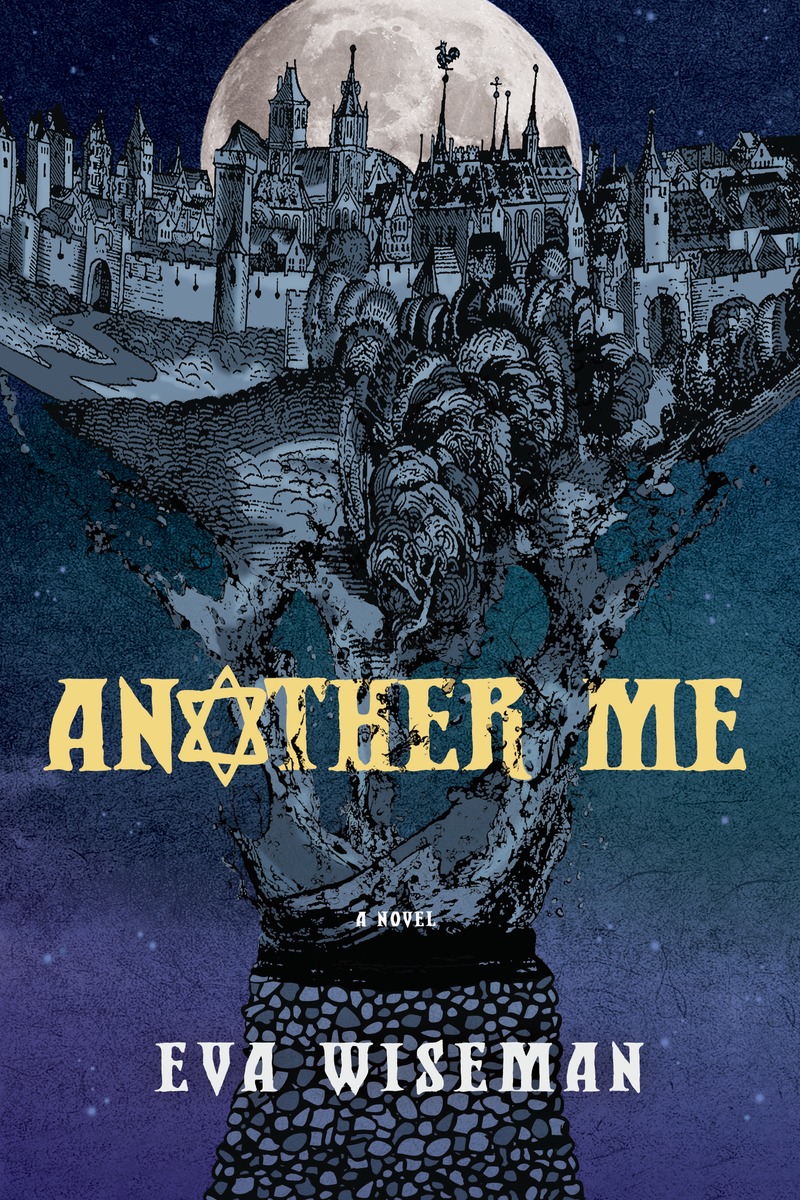| ________________
CM . . .
. Volume XXIII Number 8. . . .October 28, 2016
excerpt:
“Prologue” concludes with a cliff-hanging closing sentence, “The blade descends...”, a sentence which will propel readers into the book’s first section, “NATAN’S STORY”, which locates the story’s place and time:
There, readers meet Natan, 17, and his eight-year-old brother, Shmuli, who live on Judenstrasse, “the Street of the Jews”. The boys’ father makes a living by purchasing secondhand clothing that he, in turn, sells to the members of the Drapers Guild who then convert the used fabric “into luxurious garments for their wealthy customers.” The Jews of Strasbourg live in a state of uneasy tension with the city’s Christian majority. Although the Jewish community pays “protection” money to the city council, those monies do not prevent isolated acts of violence, such as the unprovoked beating Natan’s father receives. With his father unable to work, Natan takes a cartload of fabric to Drapers’ Row, specifically to the shop of Wilhelm the draper whom Natan’s father describes as being “more honest with us than his colleagues in his guild.” There, Natan meets “the most beautiful girl I had ever seen”, Elena, Wilhelm’s daughter and a Christian. And so begins the Romeo & Juliet secret and forbidden-love portion of the book. Should the pair’s “fraternization” be discovered, minimally they face being put in the stockades by the authorities. Complicating matters for Elena is that she is also being “courted” by her father’s physically unattractive journeyman, Hans. When readers reach p. 48 and Chapter 6, many will undoubtedly feel a sense of déjà vu as the chapter opens with the sentence: “The Angel of Death was hovering over the city of Strasbourg as I made my way home.” This chapter begins by repeating the Prologue’s contents, but now it’s being told from Natan’s point of view, and the Prologue’s cliff-hanging sentence finds its conclusion:
In a most unusual plot twist, Wiseman has killed her novel’s central character! However, this is the point where the meaning of the book’s title, Another Me, becomes clear. Though Natan is physically dead, his “soul” or “spirit” finds a new “host body” in Hans, the journeyman draper and Elena’s unwanted suitor, who, in a drunken state, had stumbled upon the killing. When Hans had touched Natan’s body to see if he was still alive, the “transfer” occurred, and the “Another Me” finds himself with a single purpose: “There was just one thought in my mind - I must save my people!” The immediate challenge for Natan is to convince others significant in his life that, though they see the physical Hans, they are actually communicating with Natan. The first person Natan must win over is Elena, and Wiseman adds another stylistic twist by parallelling the story via “ELENA”S STORY” and “NATAN’S STORY” sections throughout the rest of the book. Seeking advice from his rabbi, Natan learns that he has become:
The larger issue for Natan for the rest of the book is how he, in the body of Hans, will save the city’s Jews, and Wiseman provides him with numerous challenges, including deceit and betrayal by the city’s leadership. Though Natan succeeds, his success does not come in the form he had expected. As well, Natan must also resolve his relationship with Elena who recognizes and loves the Natan within the body of Hans, but who cannot help but recoil at “Hans’” touch. As occurs in the best of historical fiction, Wiseman smoothly integrates historical information into her storyline, and, for instance, readers will come to learn how the guild system of the period excluded Jews from most occupations and left them filling roles, especially in finance, which created anger and jealousy amongst Christians. When the Black Death arrives in Strasbourg, Wiseman weaves information concerning how the differing sanitary practices of the period’s Christians and Jews contributed to higher death rates amongst Christians. The book concludes with one of “ELENA”S STORY” sections as well as an “Epilogue” she provides. An “Author’s Note” clarifies the historical base for the book, and a three-page “Glossary” defines 18 terms which might be unfamiliar to the book’s readers. Wiseman’s best yet! Highly Recommended. Dave Jenkinson, CM’s editor, lives in Winnipeg, MB.
To comment
on this title or this review, send mail to cm@umanitoba.ca.
Copyright © the Manitoba Library Association. Reproduction for personal
use is permitted only if this copyright notice is maintained. Any
other reproduction is prohibited without permission.
Next Review | Table of Contents For This Issue - October 28, 2016 |
